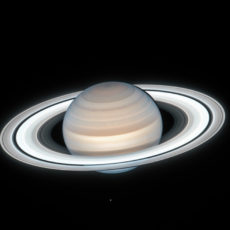
Launched in 2018, NASA’s TESS space telescope has discovered over 2,200 candidate planets orbiting bright, nearby stars, including hundreds of “smaller” planets, with many being rocky worlds in some many ways similar to Earth. The data gathered will allow the next generation of space telescopes, like the European Space Agency’s ARIEL, to explore many of these planets in even greater detail to help us better understand exoplanet composition, formation, and migration.
The first step is to confirm the existence of many in the catalog that remain candidate planets. Currently, approximately 120 have been confirmed with dozens more on the way. These confirmations require ground-based observations using gravitational measurements, high-resolution imaging, and stellar characterization.
- POWERFUL TELESCOPE FOR ASTRONOMY BEGINNERS: The Celestron AstroMaster 130EQ Newtonian reflector is ideal the telescope for beginners. It features...
- NEWTONIAN REFLECTOR OPTICAL DESIGN: With a large, 130mm aperture, the AstroMaster 130EQ can gather enough light to see our Solar System and beyond....
- EASY TO SET UP AND USE: This is a great telescope for kids and adults to use together. It features a manual German Equatorial mount for smooth and...
The exciting thing is to look at the map of TESS exoplanets as a kind of to-do list – with 2,000 things on it. It’s an incredible body of work – a rich stockpile of exoplanet candidates for the community to mine and explore for years to come,” said Natalia Guerrero, a researcher at the Massachusetts Institute of Technology and Jessie Christiansen, a research scientist at NASA’s Exoplanet Science Institute.





